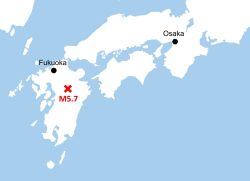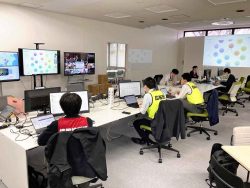Regulations on Sauna Installations Relaxed to Encourage Bathing in Nature: Facilities Encouraged to Prepare Facilities for Men and Women

Men and women enjoy saunas at an outdoor sauna event “Sauna City Sapporo ” in Sapporo in June 2023.
6:00 JST, May 28, 2024
SAPPORO — Local governments across the country are relaxing regulations regarding outdoor saunas, such as installing fencing to separate men and women, in order for people to enjoy saunas as an open space attraction among natural surroundings.
The central government is also encouraging local municipalities to adopt flexible requirements, looking forward to outdoor saunas as one of the new tourist attraction.
Unity with nature
A 39-year-old company employee enjoyed Kielo Sauna in the middle of a forest in Kushiro, Hokkaido.
“After sweating comfortably, I can soak up a feeling of openness while taking in the natural environment,” he said enthusiastically.
Most saunas are indoors, and local governments have previously instructed operators to build fences and have separate facilities for men and women in the same way as public hot baths. However, many people have complained that these restrictions would result in the loss of a sense of unity with nature, one of the greatest attractions of outdoor saunas.
Last autumn, the Hokkaido prefectural government significantly eased regulations on saunas, removing the mandatory requirement for fences and divided facilities. Hokkaido government requires sauna operators to install drainage systems, but for events such as ones using “tent saunas,” it allows them to install makeshift facilities
“We hope these measures will help reduce hurdles to operating saunas,” said Yosuke Goto, the president of the Tokachi Sauna Association.
‘Sanctuary’
Yamanashi Prefecture, which calls itself the “outdoor sauna sanctuary,” revised an ordinance in 2022 to allow both men and women to enter a sauna together if they wear bathing suits.
Aiming to ease regulations across the country, the prefectural government in January asked the Health, Labor and Welfare Ministry to review hygiene management guidelines for public baths.
“If people and companies can get into the sauna business more easily, more people will know about outdoor saunas,” said an official at the prefectural government. “We want saunas to become a new tourism resource for Yamanashi Prefecture,”
Flexible measures
The National Federation of Public Bath Industry Trade Unions conducted a survey on 157 municipalities that have public health centers under their jurisdiction. As of the end of January, 39 municipalities, or 24.8%, have eased restrictions on the installation of saunas. The health ministry informed prefectural governments and other entities of the survey results along with examples of deregulation and asked for flexible measures to be implemented.
The Fire and Disaster Management Agency plans to review the criteria that defines the distances between surrounding walls and heat sources such as stoves. The current criteria is aimed at indoor installations, so the agency will conduct an experiment within this fiscal year to measure an appropriate distance.
Dai Matsuo, who produces saunas across the country, welcomed the moves to ease regulations.
“There is growing demand to enjoy saunas along with nature, like in Finland, the home of the sauna,” he said.
"Society" POPULAR ARTICLE
-

M4.9 Earthquake Hits Tokyo, Neighboring Prefectures
-

M7.5 Earthquake Hits Northern Japan; Tsunami Waves Observed in Hokkaido, Aomori and Iwate Prefectures
-

Tsukiji Market Urges Tourists to Avoid Visiting in Year-End
-

Israeli Tourists Refused Accommodation at Hotel in Japan’s Nagano Pref., Prompting Protest by Israeli Embassy and Probe by Prefecture
-

M5.7 Earthquake Hits Japan’s Kumamoto Pref., Measuring Upper 5 Intensity, No Tsunami Expected
JN ACCESS RANKING
-

Keidanren Chairman Yoshinobu Tsutsui Visits Kashiwazaki-Kariwa Nuclear Power Plant; Inspects New Emergency Safety System
-

Imports of Rare Earths from China Facing Delays, May Be Caused by Deterioration of Japan-China Relations
-

University of Tokyo Professor Discusses Japanese Economic Security in Interview Ahead of Forum
-

Japan Pulls out of Vietnam Nuclear Project, Complicating Hanoi’s Power Plans
-

Govt Aims to Expand NISA Program Lineup, Abolish Age Restriction






















